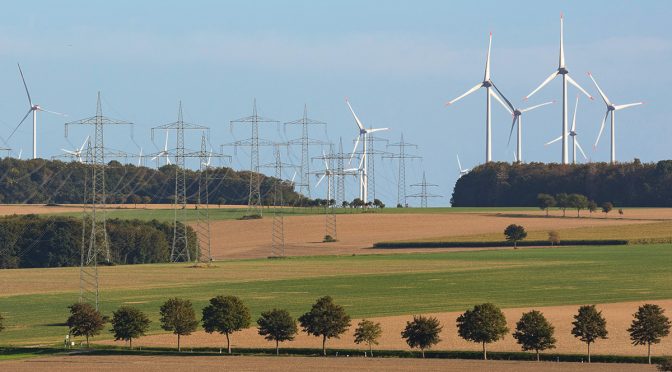The EU is debating a revised electricity market design. The European Commission has proposed a targeted reform to end the investment uncertainty caused by uncoordinated Government interventions in electricity markets. The European Parliament and Member States should stick to this proposal. But lead MEP Nicolás González Casares has proposed unhelpful things on revenue caps: lowering the bar to apply them, allowing Member States to design them and making them more permanent. National interventions like this would undermine the EU electricity market and deter investments in home-grown renewables. It would be bad for consumers and for energy security.
The EU is about to raise its Renewable Energy target for 2030 from 32% to 42.5%. For wind this means doubling the current installation rate to 30 GW/year. But Europe invested only €17bn in new wind farms in 2022, down from €41bn in 2021 – and orders for wind turbines were down 47% year on year.
One problem is inflation. The other is uncoordinated Government interventions in electricity markets which have undermined the fundamentals of the EU’s internal energy market. National interventions such as taxes, levies and revenue caps have sapped investor confidence. The results: only 10 GW of new wind farm projects reached Final Investment Decisions (FID) in 2022 – merely a third of what Europe needs to build each year. And not a single large offshore wind farm reached FID in 2022.
Electricity market design: what needs to happen now?
To overcome the energy crisis and accelerate climate action, Europe needs more renewables as fast as possible. The EU Electricity Market Design plays a key role in ensuring the necessary investment certainty.
WindEurope supports the European Commission’s balanced proposal for a revision of the EU electricity market design. But in his draft report lead MEP Nicolás González Casares has now made extremely unhelpful proposals. He wants to lower the threshold for Member States to declare regional “electricity price crises” when they’d be allowed to apply revenue caps on inframarginal generation. Member States would also be given more flexibility in designing these caps. His proposal would lead to a further fragmentation of the EU electricity market and deter much-needed investments.
The European Parliament should reject MEP González Casares’ proposals. In a new position paper WindEurope calls on the European Parliament and national Governments to:
- Avoid uncoordinated power market interventions. It is indispensable that the EU forbids revenue caps for inframarginal generation. They are toxic for investment certainty. They have proven to be a policy failure. They must not be enshrined permanently in legislation. We recommend that Council and Parliament stick to the nuanced and transparent approach proposed by the Commission.
- Allow different routes to market for wind energy: two-sided CfDs, PPAs and merchant investments. CfDs are a good mechanism to support the build-out of renewables. They guarantee revenue stabilisation and visibility. They help keep the costs of wind energy low. But they mustn’t be retroactively forced onto existing projects. And there must be sufficient flexibility to sell electricity under a Power Purchase Agreement (PPA) or on a merchant basis where operators wish to do so.
- Facilitate corporate renewable Power Purchase Agreements (PPAs). European industry understands the benefits of cost-competitive and home-grown wind energy. Companies from all sectors of the economy now want to source renewable electricity via PPAs. The Parliament and Council must remove all remaining regulatory barriers to PPAs. The European Investment Bank and national banks can help de-risk PPAs and address challenges related to off-taker credit worthiness.
- Support the expansion of Europe’s electricity grids. Renewable electricity produced from wind needs to be delivered to consumers. The market design reform should make the optimisation and expansion of Europe’s grid infrastructure a top priority. Parliament and Council must retain the proposed requirements for grid operators to inform on available capacities for new grid connections and increase the visibility of connection requests.
- Facilitate hybrid offshore wind farms. Hybrid offshore wind farms – that have grid connections to two or more countries – are a good thing. They save space and money by pooling generation and transmission assets. And they improve energy flows between countries. But Europe only has one such hybrid offshore wind farm today. Many others are planned but need more clarity on what their revenue model will be. Parliament and Council must maintain the Transmission Access Guarantees proposed by the European Commission. They will help de-risk investments without additional costs to taxpayers.
Find a more detailed overview of what the European wind industry wants from the upcoming EU electricity market revision in our new position paper.


